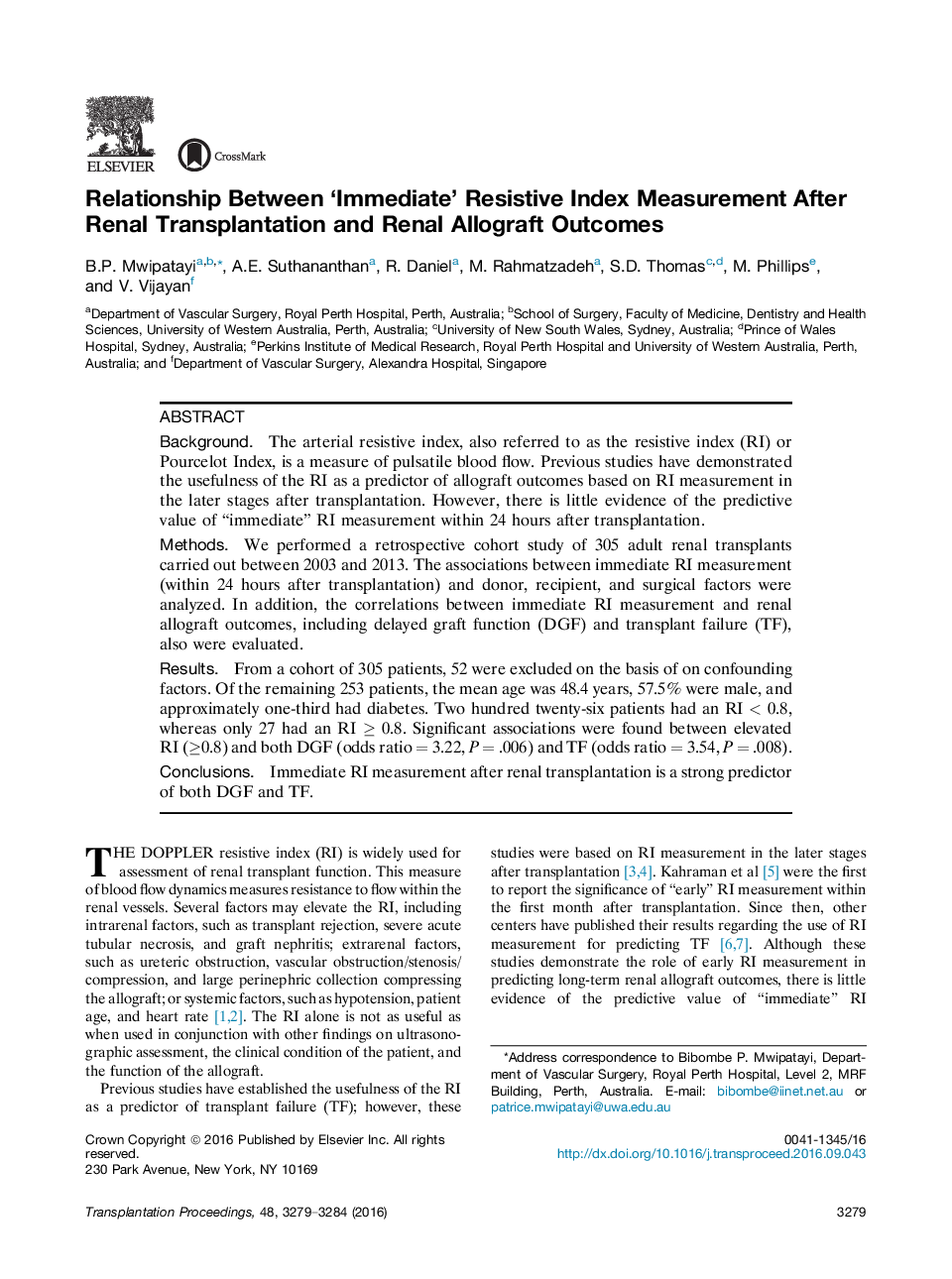| کد مقاله | کد نشریه | سال انتشار | مقاله انگلیسی | نسخه تمام متن |
|---|---|---|---|---|
| 5729083 | 1411675 | 2016 | 6 صفحه PDF | دانلود رایگان |

- Immediate resistive index measurement is a predictor of delayed graft function.
- Immediate resistive index measurement is a predictor of transplant failure.
- Hyperlipidemia and cytomegalovirus are associated with delayed graft function.
- Recipient age is significantly associated with transplant failure.
BackgroundThe arterial resistive index, also referred to as the resistive index (RI) or Pourcelot Index, is a measure of pulsatile blood flow. Previous studies have demonstrated the usefulness of the RI as a predictor of allograft outcomes based on RI measurement in the later stages after transplantation. However, there is little evidence of the predictive value of “immediate” RI measurement within 24 hours after transplantation.MethodsWe performed a retrospective cohort study of 305 adult renal transplants carried out between 2003 and 2013. The associations between immediate RI measurement (within 24 hours after transplantation) and donor, recipient, and surgical factors were analyzed. In addition, the correlations between immediate RI measurement and renal allograft outcomes, including delayed graft function (DGF) and transplant failure (TF), also were evaluated.ResultsFrom a cohort of 305 patients, 52 were excluded on the basis of on confounding factors. Of the remaining 253 patients, the mean age was 48.4 years, 57.5% were male, and approximately one-third had diabetes. Two hundred twenty-six patients had an RI < 0.8, whereas only 27 had an RI ⥠0.8. Significant associations were found between elevated RI (â¥0.8) and both DGF (odds ratio = 3.22, P = .006) and TF (odds ratio = 3.54, P = .008).ConclusionsImmediate RI measurement after renal transplantation is a strong predictor of both DGF and TF.
Journal: Transplantation Proceedings - Volume 48, Issue 10, December 2016, Pages 3279-3284